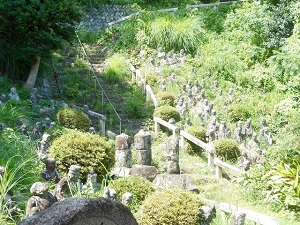Spots Topics
2017.09.30
Seikenji Temple
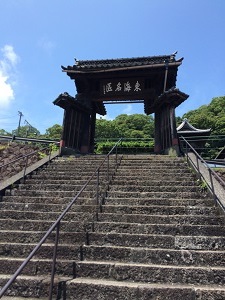
Seiken Ji is a Zen Temple located in a brisk 15-minute walk from Okitsu Station on Tokaido Line.

There is a signboard which carries some English explanation about the temple at the bottom of the stairs leading to the temple outer gate. Amusingly, after entering this gate, visitors have to cross the bridge over Tokaido Railway to reach the temple inner gate and buildings.
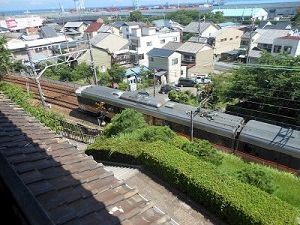
The origin of Seikenji was said to be a small Buddhism hall built in the 7th century for guarding Kiyomiga Seki, a strategic checkpoint to protect the ancient capital of Kyoto from the barbarians in the north.
Later in 1262, Kansei Shonin, a renowned monk from Tofukuji Temple in Kyoto came to the hall and established Seikenji Temple sponsored by a local wealthy person.
In Muromachi period in 14th to 16th century, both Takauji Ashikaga, the first Shogun of Muromachi Shogunate, and the local feudal lord family, Imagawa Clan adored this temple.
However, the temple was involved in many wars fought between the local feudal lords such as Imagawa, Takeda, Tokugawa, and Hojo Clans as it was located at a strategically important point. The temple was destroyed and rebuilt many times. Especially during the civil war period in the late 16th century, the temple was devastated. Ieyasu Tokugawa, the first Shogun of Tokugawa Shogunate, who brought peace to Japan in early 17th century finishing the civil war, studied in this temple in his childhood. He was shocked to see the wreckage of his beloved temple on his way to Kyoto and restored it. He came to the temple many times after the restoration. Though the main building remaining today was reproduction in early 19th century, Ieyasu’s study room has been replicated and shown to the visitors.
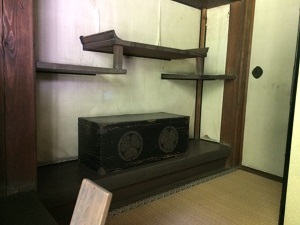
Of course, the temple was taken good care of by the following Tokugawa Shoguns. So, visitors can find Tokugawa’s family crest-three hollyhock leaves inside a circle-in many places in the temple.
Meiji Emperor visited this temple and Taisho Emperor often stayed here when he was a child. The room where Meiji Emperor stayed is shown to the visitors.
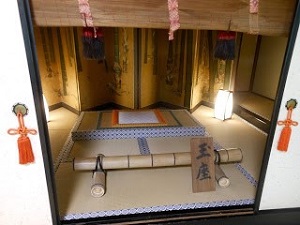
The temple is also famous for its Gohyaku-rakan or 500 stone Buddhism statues in its yard. It is said that there is the one that looks like very person.
